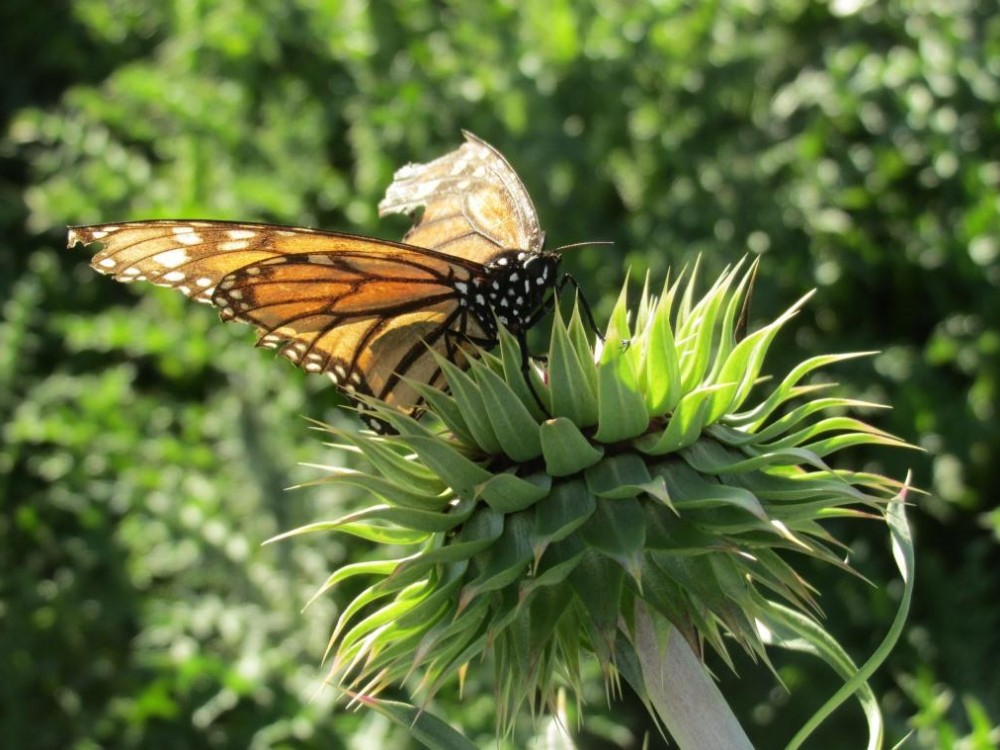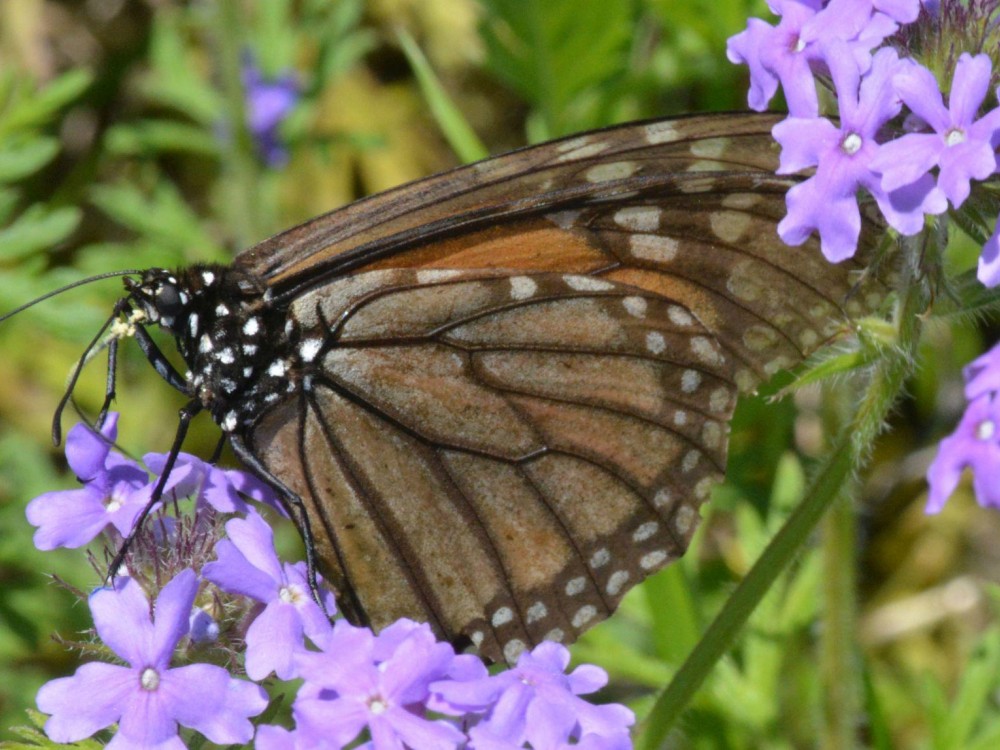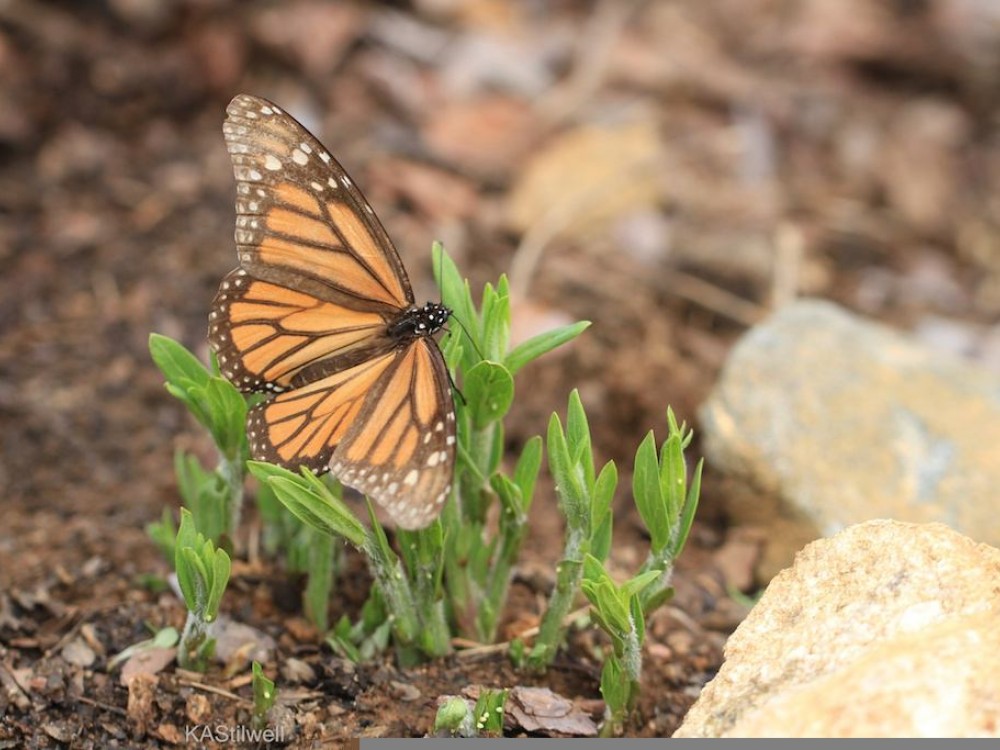Monarch Wings Over Time
When spring arrives, monarchs that spent the winter in Mexico have been alive for 6-8 months. Their wings have changed dramatically. What do wings look like as they get older and what causes the changes?

New and Fresh
When a monarch emerges from its chrysalis, it's born with vivid orange wings in pristine condition.

Old and Worn
Wings that begin as fresh as a flower become dull, tattered, and torn over time. What happens?

Rough Encounters
Over the course of a butterfly's life, its wings can be scratched by thorns, bristles, branches, grasses or anything sharp it encounters.

Weather Wear
Wings can be damaged by wind, hail, snow, or rain. This female's forewings were tattered in a storm. The wind may have tossed her around or she may have been struck by flying debris.

Narrow Escapes
Sometimes the tears or scratches on a wing show evidence of a predator. The V-shaped scratch on this female's hind wing was likely made by the beak of a bird.

Sticky Situations
A butterfly may escape a spider's web but its wings may be damaged by the struggle. The sticky silk threads can remain clinging, too.

Losing Color
After many scrapes, scratches, nicks, and tears, a monarch no longer appears bright orange.

Magnified Wing
The surface of a monarch's wing is covered with thousands of tiny, flat, colorful scales. As the monarch loses these scales, it loses its color.

Wings Show Age
The color and condition of a monarch's wings reveal its age. The young butterfly is vividly colored. The light-colored monarch is 7 months old and has lost most of its scales.



